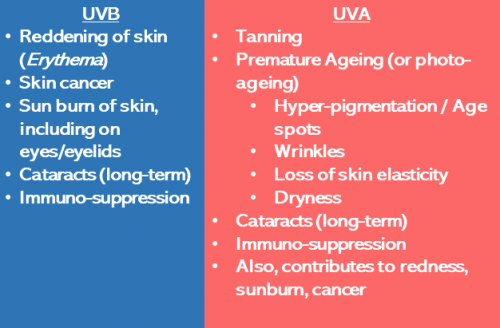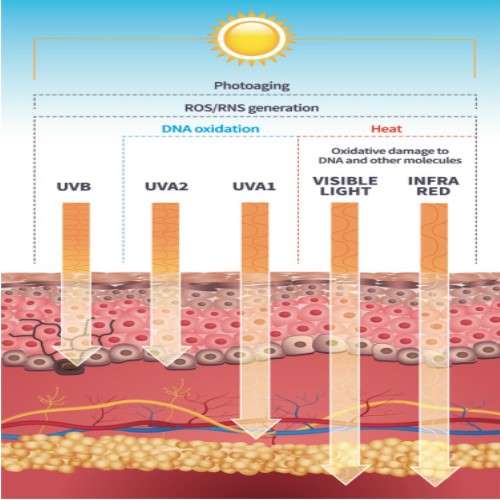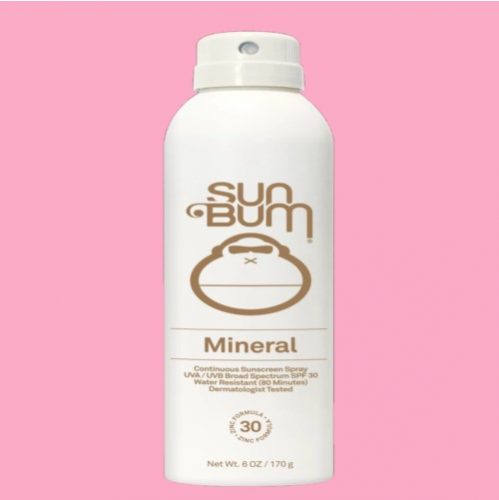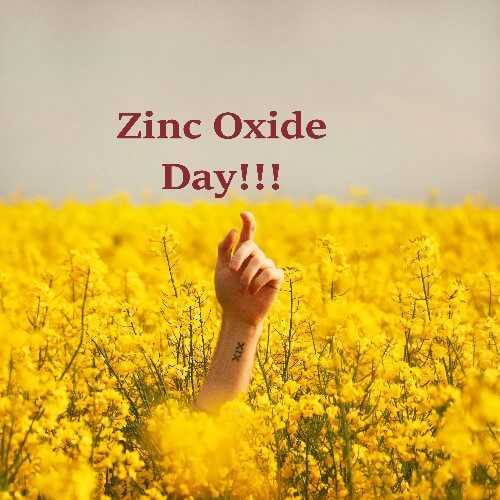I have wanted to write this blog for SO LONG, that….

This blog is necessary. I get a lot of questions about chemical sunscreens and safety concerns, especially hormonal related. But Zinc Oxide is the ONLY UVA filter with a long track record of safety, non-existent dermal absorption and is photostable. It ticks the right boxes…

Today’s message is this: If you’ve found a Zinc Oxide sunscreen, stick to it and for the rest of us, let’s find one we love and can use everyday.
Skincare Nerd Edit: back to basics
As I’m back from NYC, I’ll be discussing how sunscreens sold in the USA use Zinc Oxide (“ZnO“). What I write pretty much applies to all ZnO sunscreens anywhere.
Good to know
- American products list UV filters as “Active Ingredients” on labels and must state the concentration of ZnO in the product.
- “Mineral”, “Zinc” and “Zinc Oxide” are interchangably used to refer to ZnO and/or Titanium Dioxide containing sunscreens.
- American manufacturers only ever use 8 out of 16 filters available – that’s me analysing the ingredient labels of over 150+ products and 12 brands in CVS pharmacy.

- One out of every 13 sunscreens has ZnO as the ONLY active ingredient, so its more common than you think.
A. WHAT’S THE LOWDOWN ON ZNO?
1) ZnO is GRASE
Current sunscreen regulation/data is under review in the US. Of the 16 permitted filters, ONLY 2 filters are GRASE. (See the FDA’s monograph listed in Notes)
GRASE stands for Generally Regarded As Safe and Effective. Only ZnO and Titanium Dioxide are regarded as GRASE….
If ZnO was a Democratic presidential candidate, that’s the equivalent of God endorsing you.
2) ZnO is a broadspectrum filter
ZnO is a broadspectrum filter, that protects the skin by reflecting and scattering both UVB and UVA.
As regular readers know focussing on just UVB is not enough, we also need to think of defending our skins against the harmful effects of UVA, summarised below

While UVB is more intense, UVA forms like 90%-95% of UVR reaching us and the damage caused by UVA is cumulative over our lifetime!

ZnO provides protection against BOTH UVA2 and UVA1, when most filters stop at UVA2, which is not great because about 70% of UVR is UVA1.
Most non-mineral sunscreens will add more ingredients – SPF boosters and more UV filters – to achieve higher levels of protection against UVA. ZnO or mineral sunscreens don’t have this issue.
Therefore, ZnO sunscreens generally have fewer ingredients – which reduces the risk that the product has unnecessary fillers or preservatives. You want this from your sunscreen.
3) Is SPF 50 really achievable with ZnO formulations?
My view is that any SPF 50 ZnO formula should be treated as if it were SPF 30 as:
- I’m not persuaded that 22% ZnO = SPF 50. REN and Drunk Elephant – have 22% and 20% ZnO products – both of which are SPF 30 – and honestly, I just trust the reputation of these brands more.
4) ZnO commonly combined with Titanium Dioxide (TiO2)
ZnO is commonly combined with Titanium Dioxide. They both complement each other as UV filters. TiO2 is the better UVB filter and ZnO is the better UVA one.
Usually such formulations, will contain nano forms of TiO2 and ZnO because otherwise the product produces a chalky white finish.
TiO2 and ZnO are commonly found in sunscreens for kid’s and babies.
5) ZnO is a photostable UVA filter
In the US, there are two UVA filters that manufacturers use – Avobenzone and Zinc Oxide.
Only ZnO is photostable.
Avobenzone exhibits greater photo-instability than other UV absorbers. “Photo-instability” means Avobenzone degrades quickly upon exposure to sunlight, which can cause its efficacy to be decreased by between 50 and 90 percent after 60 minutes of exposure to sunlight. (See the FDA’s monograph below)
Manufacturers have to combine Avobenzone with more chemicals to stabilise the formula. There is no such issue with ZnO, which means fewer ingredients in products
6) ZnO is unreactive
Dermatologists recommend that we reapply sunscreen every 2 hours, which is a massive issue if your UV filters are being absorbed into your bloodstream. We know that this is a problem with Oxybenzone because it has been found in the urine of over 90% of Americans. And despite concerns, over 20% of sunscreens I surveyed contained Oxybenzone as an active ingredient.
This is not a problem with ZnO because it basically sits on your skin. Hence, its recommend to folks with sensitive skin.
Also, in the highly unlikely event, that tiny amounts of ZnO are absorbed, it breaks down into Zn+ and O- ions in your body – both of which are already abundantly present.
B. WHEN SHOULD YOU AVOID ZNO?
You should aerosols and any other form of spray applications containing ZnO or Titanium Dioxide, a wide berth.
Archaic US regulation doesn’t address this, but the EU does. The EU says that the concern with spray sunscreens is that you are inadvertently inhaling ZnO and/or TiO2. The risk – like any airborne heavy particle is that it goes straight into your lungs and causes respiratory problems. (See the attached links to EU documents)
So the risk has to do with the nature of breathing in heavy particles rather than just to do with ZnO.
The great news is that US manufacturers, have got the message. Out of 46 sprays, I reviewed, there were only 2 containing ZnO. These are:
babyganics sunscreen spray SPF 50+

SunBum Mineral sunscreen spray SPF 30

C. SHOULD I BE CONCERNED ABOUT ZINC NANO-PARTICLES?
When sunscreens were first introduced, Zinc Oxide formulas just stayed chalky white – think cricket players with white paint across part of their faces.
Newer formulas have nano ZnO, which are essentially very small ZnO particles – with diameter over 20 nm and generally between 30 nm and 55 nm.
The smaller size of ZnO results in no chalky finish and the concern is smaller ZnO gets absorbed into your skin and may cause harm.
What do the Americans say about nano ZnO?
In the US, there is no requirement for manufacturers to tell you that they use nano ZnO. Surveys show that nano ZnO is used in Made in the USA formulations.
If your ZnO sunscreen rubs in relatively easily leaving no chalky residue, it’s a safe bet that itcontains nano ZnO.
What do the EU say about nano ZnO?
In the EU, manufacturers must tell you when they use nano ZnO.
The EU says that BOTH non-nano and nano ZnO and TiO2 are safe to use as UV filters <25% provide they are dermal applications – ie, you are applying the product on your skin.
With dermal applications, even if the ZnO is absorbed into your skin, then it breaks down into Zn+ and O-, both of which are already present in humans.
What about other issues?
The EU says the jury is still out on genotoxicity for both ZnO and Titanium Dioxide. They need more data and so watch this space for more updates.
See also: Top 5 sunscreen recommendations, Drunk Elephant Sunscreen SPF 30 product review, How to buy sunscreen: the UVA cut, REN sunscreen SPF 30 product review
That’s it for this week – I would love to hear about your favourite sunscreen, what works/doesn’t for you. Please drop me a line at email@happyskindays.com if you would like a product reviewed… Auf Wiedersehen.
Notes
https://ec.europa.eu/health/scientific_committees/consumer_safety/docs/sccs_o_137.pdf
https://ec.europa.eu/health/scientific_committees/consumer_safety/docs/sccs_o_163.pdf
Sunscreen Drug Products for Over-the-Counter Human Use (proposed rules by FDA 02/2019)
